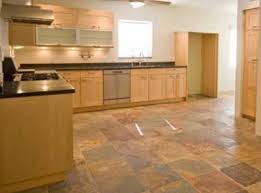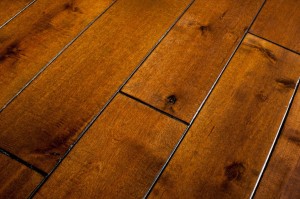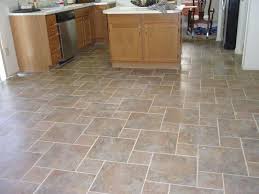Selecting Kitchen Flooring
There are many factors to consider while selecting kitchen flooring. Kitchen is one room in the house where a lot of heat, air, and moisture exist along with natural ingredients, effectively creating a right environment for insects, fungus, and microbes. It is also a place where food, acidic or alkaline, can fall on the floor and floor may react with such food stuff. Even the cleaning fluids can be spilt on floor, and there may be problems of corrosion, and cracks, which can be colonized by microorganisms. Any water on kitchen’s floor may lead to it expanding, or people in the kitchen falling. Heavy equipment or hot vessels can fall on kitchen’s floor. Such accidents should not damage kitchen flooring. Since fire is inseparable part of kitchen, such flooring should at least not be highly inflammable. Best flooring for kitchen, therefore, is one that has none of these drawbacks. In addition, it blends with the décor all around, including other rooms. Cost factor also influences such flooring selection.
Kitchen flooring options
There are several types of flooring that can be used in kitchens. Each one of them, however, has some advantages and disadvantages from the perspective of kitchen. The list of such flooring options for kitchen includes
-
Kitchen tile flooring
Kitchen tile flooring includes ceramic, cork, vinyl, linoleum, and porcelain tiles. Ceramic and porcelain varieties are rather hard, but tend to chip and crack. Cork flooring in kitchen is warm and cushiony in nature. It is resistant to mildews, allergens, and dents like the linoleum flooring. Vinyl floorings though available in innumerable colors, tend to tear easily. Porcelain floorings are perhaps the best of the lot.
-
Laminate
This resembles wooden kitchen flooring and is easy to install. Such flooring materials are available in wide range of colors. These are also fairly hard, and do not dent or develop scratches easily. These floorings are also stain resistant.
-
Wood
There are both hardwood and engineered wood tiles available for kitchen’s flooring.
These are warm at feet. Another drawback with wooden floorings is their joints. These let infectious bacteria and dust reside in them. Cracks rarely develop on such flooring, but these may develop stains of acids and even water. Maintenance is a problem with such flooring.
-
Bamboo
One of the major disadvantages of Bamboo floorings for kitchens is the fact that these are available in very few colors. However, the light golden colored flooring adds substantially to the aesthetic appeal of the kitchen. It also keeps dampness out.
-
Concrete
This is ideal for many purposes, though it does crack and chip. It also gets stained easily but can be painted as needed for the kitchen. Such floors in kitchens require annual resealing.
-
Natural stone
This category of flooring material for kitchens also includes a wide range of options such as sandstone, limestone, marble, granite, and slate. The worst amongst these are limestone, and marble, because marble tends to react with acids and is in general prone to cracks. There is a variety of marble called tumbled marble. This is comparatively much harder.
Kitchen flooring costs
Costs of flooring for kitchen differ as per the variety selected, and sizes of tiles or planks. For example, concrete flooring for kitchen may cost around $13 per square foot, whereas natural stones such as harder marbles, if used in kitchens may cost almost $30 per square foot. There are lower end natural stone options which would cost merely $10 for every square foot. Bamboo floors for kitchen can be bought for anything in the range of $7 and $10. Cheapest flooring for kitchens would be vinyl and ceramic tiles. Prices of these floorings start at $2 per square foot and may go as high as $20 per square foot. Comparatively, laminate floorings are sold by companies such as wood floors plus for anywhere between $4 and $10 for each square foot.
In contemporary world, there is a wider choice of flooring materials for kitchens. Price and looks, however, should not be the only factors considered while selecting flooring for kitchen, because wrong selection can have adverse effects on the family’s health.



